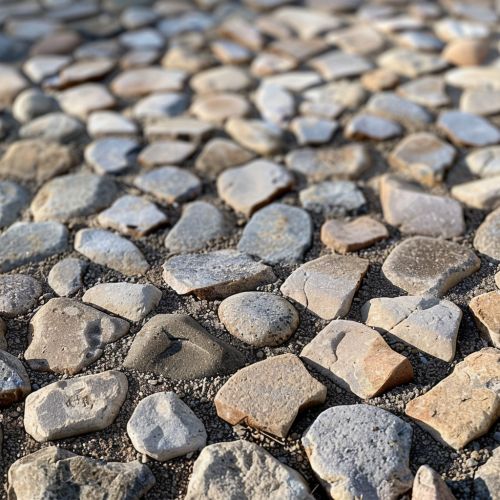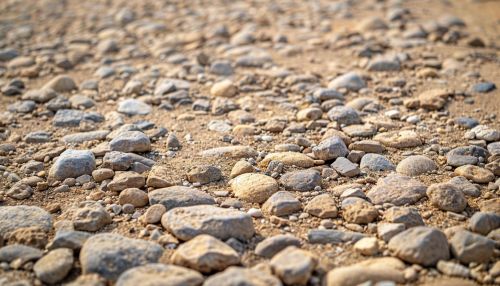Desert pavement
Introduction
Desert pavement, also known as desert varnish or desert crust, is a geological phenomenon found in arid environments. It is a surface layer of closely packed, interlocking fragments of gravel, pebbles, and small boulders that have been weathered and smoothed over time. This layer is typically found covering the topsoil in desert environments, providing a protective layer against wind and water erosion.


Formation
The formation of desert pavement is a complex process that involves a variety of geological and climatological factors. The primary mechanism is the removal of fine particles (such as sand and dust) by wind and occasional rain, a process known as deflation. Over time, this process leaves behind a layer of larger, coarser material that is too heavy to be transported by the wind. This layer gradually becomes compacted and interlocked, forming a protective crust over the underlying soil.
Characteristics
Desert pavements are characterized by their smooth, almost polished appearance, which is the result of prolonged weathering and erosion. The individual rocks and pebbles that make up the pavement are typically rounded and flattened, having been worn smooth by the abrasive action of wind-blown sand and dust. The color of the pavement can vary widely, depending on the types of rocks present, but it is typically a dark, rusty brown due to the presence of iron oxides.
Distribution
Desert pavements are found in arid environments around the world, from the Mojave and Sonoran deserts in the United States, to the Sahara in Africa, and the Australian Outback. They are typically found in areas with low rainfall and high wind speeds, where the process of deflation can occur most effectively.
Ecological Importance
Despite their seemingly inhospitable conditions, desert pavements play a crucial role in desert ecosystems. The pavement layer protects the underlying soil from erosion, helping to conserve moisture and nutrients. It also provides a stable surface for the growth of desert plants, which can take root in the small gaps between the rocks. Additionally, desert pavements can also serve as a habitat for a variety of desert-dwelling organisms, from insects and spiders to lizards and small mammals.
Human Interaction
Humans have interacted with desert pavements for thousands of years. In many desert cultures, these natural roadways have been used for travel and trade. In some areas, desert pavements have also been used as a canvas for ancient rock art, with the dark varnish being chipped away to reveal the lighter rock beneath. However, human activities can also disrupt desert pavements, leading to increased erosion and desertification.
